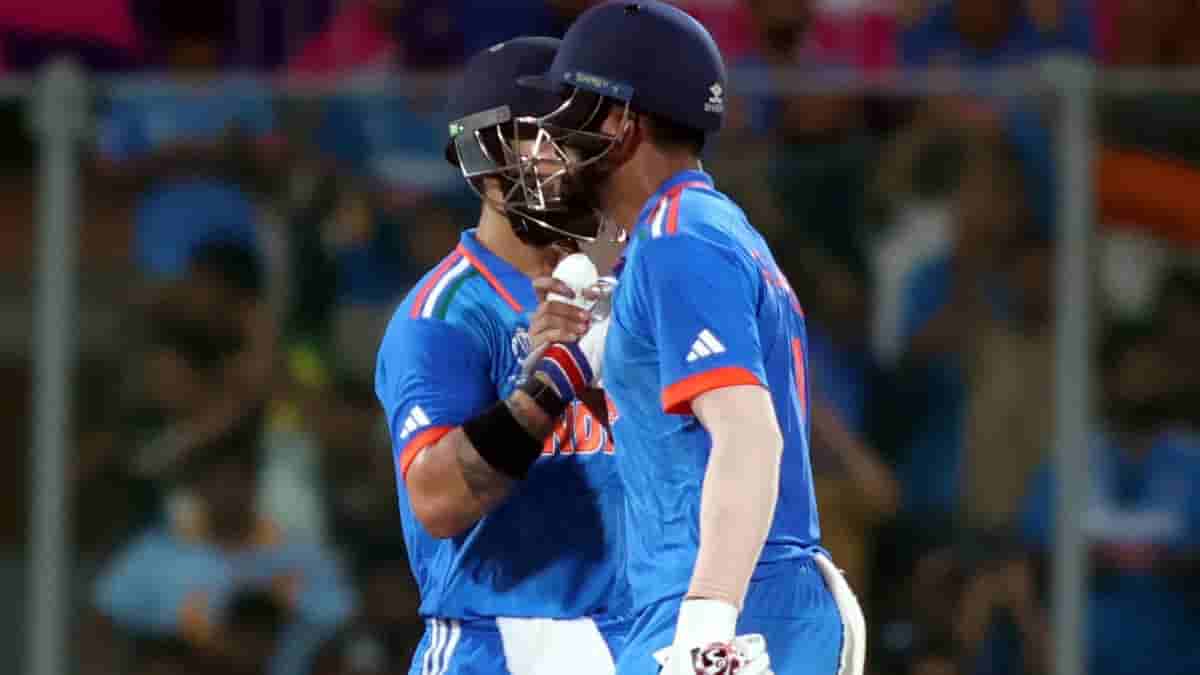
In a remarkable turn of events, Virat Kohli and KL Rahul played saviors as they engineered a stunning partnership in India’s opening match of the 2023 Men’s ODI World Cup against Australia, helping the team overcome an early batting collapse reminiscent of past nightmares.
The MA Chidambaram Stadium in Chennai was filled with tension as India found themselves at two for three in just two overs while chasing a target of 200 runs. Memories of the disastrous 5-3 start in the 2019 Men’s ODI World Cup semi-final and the early collapse in the 2017 Champions Trophy final haunted fans.
The situation seemed dire, with the universe seemingly conspiring to relive those haunting moments of a batting meltdown. It was an unprecedented challenge as no team had ever won after losing three of their top four batters for ducks.
However, what unfolded next was nothing short of a script that restored hope and gave fans their voices back. Virat Kohli and KL Rahul orchestrated a partnership of 165 runs, taking India from the brink of disaster to a resounding victory.
Also Read: Test records: Top 10 fastest centuries in Test cricket
The partnership between Kohli and Rahul was the beacon of hope for India in their quest to chase down the colossal target of 200. While Hardik Pandya, Ravindra Jadeja, and Ravichandran Ashwin could have made contributions, it was Kohli and Rahul who were best equipped to steady the ship, absorb the pressure, and score the required runs.
Their partnership had previously witnessed a historic 233-run stand against Pakistan in the Asia Cup, albeit under different circumstances. Here, they had to tread carefully as Australia’s new-ball bowlers, Mitchell Starc and Josh Hazlewood, extracted movement under the lights on a pitch dominated by India’s spin trio.
Moments of tension filled the air as Kohli survived close calls and faced probing deliveries from Hazlewood and Starc. However, every run he scored received thunderous cheers from the crowd.
At one point, Kohli mistimed a pull shot off Hazlewood, evoking memories of a similar dismissal in the 2015 World Cup semi-final against the same opposition. Yet, fortune favored Kohli this time as Mitchell Marsh dropped the catch, allowing him to continue.
Gradually, tentativeness transformed into confidence as Kohli executed his trademark flicks through the mid-wicket region, further energizing the crowd.
KL Rahul, on the other hand, faced the leg-spin of Adam Zampa after weathering the new ball. Six months ago, at the same venue, Rahul had faltered against Zampa, mistiming a shot to long-on in a chase of 269. However, this time, Rahul showed his mettle by expertly timing late cuts and piercing the off-side gap for boundaries.
As dew descended and Zampa struggled to find his rhythm, Kohli and Rahul accelerated, taking boundaries off both pace and spin. Though Kohli departed with 33 runs still required, the fans saluted him with a thunderous applause.
Rahul rose to the occasion, sealing the victory and underscoring why his return from injury was eagerly awaited by the team management.
The Indian middle order has found stability with Rahul’s consistent performances. Since his return to the middle-order in early 2020, Rahul has amassed 1326 runs in 27 innings at an average of 66.30, including three centuries and ten fifties. His ability to handle pressure and steer the team out of crises sets him apart.
The partnership between Kohli and Rahul not only resurrected India from a precarious position but also prevented a recurring pattern of batting meltdowns costing the team crucial matches. As the stadium reverberated with the sounds of “Believer” by Imagine Dragons and “Maa Tujhe Salaam” by AR Rahman, fans experienced moments of joy mixed with relief, having been silenced by the early setbacks.




